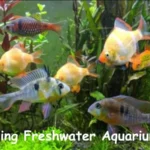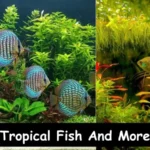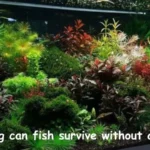fish farming
Feeding fish while on vacation
Leaving for vacation is an exciting time, filled with anticipation for adventure and relaxation. However, for many pet owners, the joy of travel is often accompanied by the worry of leaving their beloved companions behind. For those with fish tanks, this concern is particularly acute. Unlike dogs or cats, fish cannot be easily left to their own devices for extended periods. They rely entirely on their owners for food, water quality, and a healthy environment.
The question of feeding fish while on vacation is a common one, and it’s crucial to find a solution that guarantees your fish’s well-being while you’re away. This essay of fishtankmagic.com will delve into the various methods available, highlighting the pros and cons of each, and offering practical tips for ensuring your aquatic companions thrive even in your absence.
Understanding the Needs of Your Fish
Before exploring feeding options, it’s essential to understand the specific needs of your fish. Different species have varying dietary requirements, feeding frequencies, and sensitivities to changes in their environment. For instance, goldfish can tolerate longer periods without food compared to more active species like angelfish or cichlids.
Factors to Consider When Choosing a Feeding Method
The duration of your vacation is a primary factor in determining the most suitable feeding method. Short trips of a few days might allow for simpler solutions, while longer vacations require more elaborate arrangements. Other factors include:
- The size and number of your fish: Larger fish require more food, while smaller fish may need more frequent feeding.
- The type of fish: Some fish are more sensitive to changes in their diet or environment than others.
- The complexity of your tank setup: Multi-level tanks with hiding places may require more careful consideration than simple tanks.
Feeding Options for Your Fish While on Vacation
1. Automatic Fish Feeders:
Automatic fish feeders are arguably the most convenient and reliable option for feeding fish while on vacation. These devices are programmed to dispense a predetermined amount of food at specific intervals.
Pros:
- Convenience: Set it and forget it! No need to worry about manually feeding your fish.
- Consistency: Ensures your fish receive a regular food supply, even if you’re away for an extended period.
- Adjustable feeding schedules: Allows for customization based on your fish’s specific needs.
- Variety of models: Available in different sizes and feeding mechanisms to suit various tank setups.
Cons:
- Initial cost: Automatic feeders can be more expensive than other options.
- Potential for malfunctions: While reliable, these devices can occasionally malfunction, leading to overfeeding or underfeeding.
- Limited food choices: Most automatic feeders are designed for dry flake or pellet food, limiting the variety of your fish’s diet.
2. Manual Feeding by a Friend or Family Member:
Enlisting the help of a trusted friend or family member is a simple and often cost-effective solution. This method relies on someone visiting your home to manually feed your fish.
Pros:
- Flexibility: Allows for feeding with fresh, varied foods.
- Direct observation: Provides an opportunity to check on your fish’s overall health and tank conditions.
- No additional equipment required: Eliminates the need for purchasing automatic feeders.
Cons:
- Reliance on others: Requires finding a reliable person willing to take on the responsibility.
- Potential for inconsistency: The frequency and amount of food given may vary depending on the individual’s diligence.
- Limited availability: May not be feasible for extended vacations or if you have no friends or family nearby.
3. Vacation Fish Food Blocks:
Vacation fish food blocks are designed to slowly release nutrients into the water over a period of time, providing a consistent food source for your fish.
Pros:
- Convenience: Easy to use and requires minimal setup.
- Long-lasting: Can provide food for up to two weeks, depending on the size of the block and the number of fish.
- Minimal mess: Eliminates the need for daily cleaning of uneaten food.
Cons:
- Limited nutritional value: Blocks typically contain a limited range of nutrients compared to a balanced diet.
- Potential for overfeeding: If the block is too large for the tank size or number of fish, it can lead to excessive nutrient buildup in the water.
- Not suitable for all fish: Some fish species may not readily accept this type of food.
4. The “Slow Release” Method:
This method involves placing a small amount of food in a container with holes, allowing it to slowly release into the water over time.
Pros:
- Flexibility: Can be used with various types of food, including flakes, pellets, and even frozen food.
- Controllable feeding rate: The size of the holes and the amount of food placed in the container can be adjusted to control the feeding rate.
- Minimal waste: Reduces the amount of uneaten food accumulating in the tank.
Cons:
- Requires some DIY: May involve creating a suitable container with holes.
- Potential for clogging: The holes in the container can become clogged with food, reducing the feeding rate.
- Not suitable for all fish: Some fish may be too small or agile to access the food from the container.
5. The “Fasting” Method:
This method involves leaving your fish without food for the duration of your vacation.
Pros:
- Simplicity: Requires no additional equipment or assistance.
- Safe for some fish: Certain fish species, like goldfish, can tolerate short periods of fasting.
Cons:
- Not suitable for all fish: Most fish species require regular feeding for optimal health.
- Potential for stress: Fasting can be stressful for some fish, especially those with high metabolic rates.
- Risk of starvation: If the vacation is too long, fasting can lead to starvation, particularly for smaller or more active fish.
Choosing the Right Feeding Method for Your Fish
The best feeding method for your fish depends on a variety of factors, including the type of fish, the duration of your vacation, your budget, and your personal preferences.
- For short vacations (up to 3-4 days): Automatic feeders, vacation food blocks, or manual feeding by a friend or family member are suitable options.
- For longer vacations (5-7 days or more): Automatic feeders or vacation food blocks are generally recommended.
- For sensitive fish species: Automatic feeders with adjustable feeding schedules or manual feeding by a trusted person are preferred.
- For fish with specific dietary needs: Manual feeding by a friend or family member allows for greater flexibility in providing a balanced diet.
Additional Tips for Feeding Fish While on Vacation:
- Test your chosen feeding method before leaving: This will ensure that the method works properly and that your fish accept the food.
- Provide adequate water changes: Even if you’re using an automatic feeder, it’s essential to ensure your tank water remains clean and healthy.
- Monitor your fish’s behavior: If you have a friend or family member checking on your fish, ask them to observe their behavior for any signs of illness or distress.
- Consider a fish sitter: For extended vacations or if you have complex tank setups, consider hiring a professional fish sitter to care for your aquatic companions.
Conclusion:
Leaving your fish unattended while on vacation requires careful planning and preparation. By understanding your fish’s needs and considering the various feeding options available, you can ensure their well-being while you’re away.
Whether you choose automatic feeders, manual feeding, or other methods, it’s crucial to select a solution that provides a consistent food supply and maintains a healthy environment for your aquatic companions. Remember, responsible pet ownership extends beyond the confines of your home, and ensuring the well-being of your fish while on vacation is a testament to your commitment to their care.












